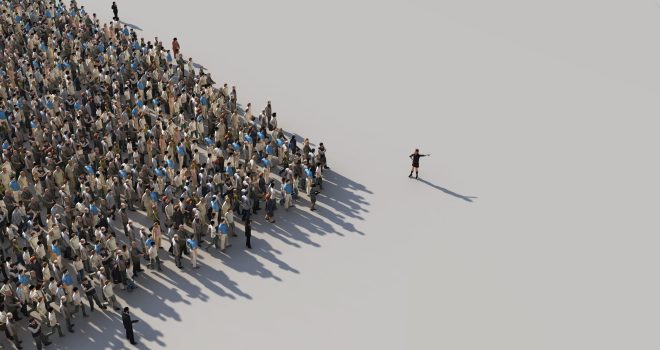Don’t Ignore The Gorilla – Not the Elephant – In The Room

I am going to start this article by asking you to watch a short video. It’s all fine to watch – I have watched it myself – and it lasts 1 minute 21 seconds.
It is the “selective attention test” video on www.dansimons.com/videos.html (it is the first video on this website showing people in white t-shirts and black t-shirts throwing a ball to each other). I promise you it is nothing untoward – just follow the instructions on the video – and don’t read on until you have watched it.
STOP! Have you really watched the video?
How did you get on? Did you count the correct number of passes? Fifteen. Did you see the gorilla first time around? It is a classic experiment and one, now you have seen it, you may well already of heard about. It’s also great to try on your family, friends and colleagues.
My thirteen year-old son saw the gorilla. My nine-year old son did not. My wife voided her attempt by arguing that some people in the black t-shirts were wearing white trainers and, therefore, the instructions were confusing (watch it back – my wife has a point).
I saw the gorilla – but I was looking for it (so I was not an innocent participant). I knew of the experiment yet had never seen the video – and I first came across the reference to it whilst reading “12 Rules of Life. An Antidote to Chaos” by Jordan B. Peterson1.
Now, I like my books on psychology, behaviour (or whatever genre they are) and this one is a bit special. It is quite ‘full on’, it is funny and it’s controversial at times – I don’t mind a bit of controversy.
The chapter I am referring to here is “Rule 4: Compare Yourself To Who You Were Yesterday. Not To Who Someone Else Is Today”, and it’s talking about (as I understand it) how to be a better version of yourself by not trying to be like someone else (maybe a celebrity you admire, for example) as this could be an unbridgeable gap between you and your target of comparison – rather moving towards a point which we deem better in accordance with our explicit and implicit values. Powerful stuff.
Jordan B. Peterson talks about aiming for this point maybe by aiming small and changing incrementally, and each change provides a slightly higher baseline of comparison towards your better point. Jordan B. Peterson rather eloquently states it as “Now you’re aiming for something higher. Now you’re wishing on a star”.
He then writes “What you aim at determines what you see”, and leads into a discussion on dependency on sight and how the ‘gorilla’ experiment (as I’m now calling it) illustrated how vision is expensive – pyschophysiologically expensive, and neurologically expensive.
That is, there is so much to see (in the world) that we cannot process it all, and so we focus our attention and sight on things we are aiming at and let everything else – which is almost everything – fade, unnoticed into the background. Most of our vision is peripheral and low resolution.
This explains why a large number of people (does this include you?) did not see the gorilla – as you aimed/focussed on the white t-shirts throwing the ball to each other.
Is a project the same? Our “aim” is getting the project output and does this mean, therefore, that our attention is focussed on achieving this – and everything else about the project fades unnoticed into the background (in the project periphery, if you like)?
An interesting idea and one I can see is true from working with lots of organisations on their projects. Let me give an example.
We all know from good project management training/literature/experts that we should always have a risk register/log on a project. Moreover, that it is a fundamental tool for success, and that it should be regularly reviewed and kept up-to-date.
I am still amazed when projects don’t have a risk register/log – let alone regularly review it and keep it up-to-date. How many of you reading this are having an awkward moment right now? When asked why a risk register/log doesn’t exist on a project, I often get replies of “we’re busying delivering the project”.
What you aim at determines what you see. Are you so busy being “busy fools” (I did say I liked a bit of controversy) that you can’t see the big ‘project primate’ beating its chest in front of you? In this case, the big project primate is the risk register/log. What you aim at determines what you see.
The question I have to you all reading this article is: how many other big project primates beating their chests in front of you can you not see? What you aim at determines what you see.
You need to focus on achieving the project output – yet not at the expense of how you get there which has to include being able to see all of the ‘project primates’. As Jordan B. Peterson says (again rather eloquently) at the end of Rule 4: “To journey happily may well be better than to arrive successfully…”
1Peterson, Jordan B. (2019). 12 Rules of Life. An Antidote to Chaos. Penguin Books. ISBN: 978-0-141-98851-1




